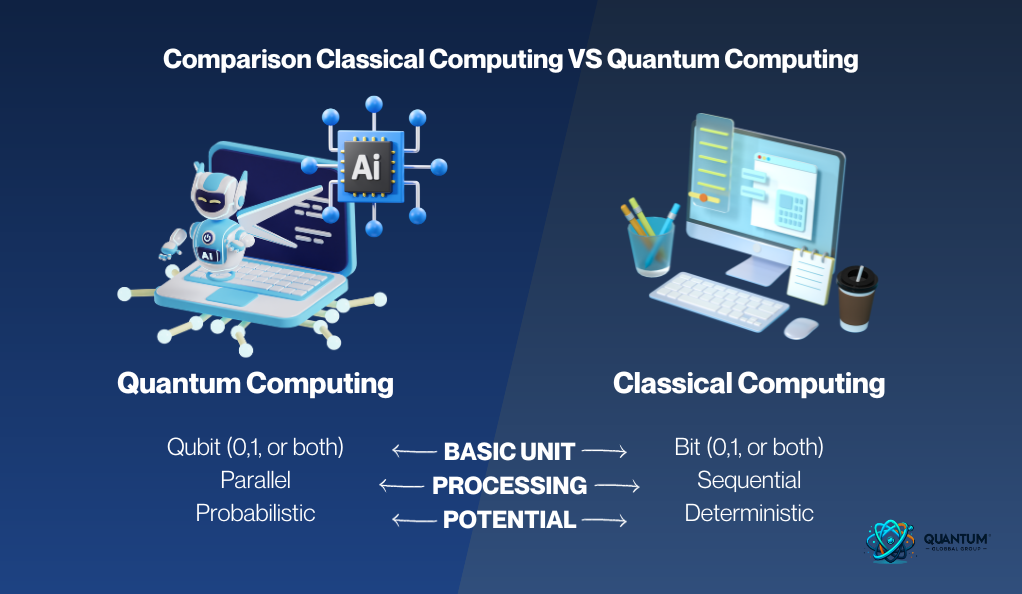Quantum computing has emerged as a revolutionary concept, promising a paradigm shift in computational capabilities. However, amidst the excitement surrounding this nascent field, there exists a pressing question: What is a more practical alternative to quantum computing? As researchers and technologists venture into the complexities of qubits and superposition, the pragmatic approach to computing also deserves attention. This discussion will elucidate several compelling alternatives that are currently more feasible and widely applicable.
At the forefront is classical computing, which continues to thrive, bolstered by advancements in hardware and software optimization. Classical computers, characterized by their binary system of zeroes and ones, have consistently proven to be versatile for an array of applications. The improvements in microprocessor technology, especially those pertaining to parallel processing and multi-core architectures, have further amplified their efficacy. Sophisticated algorithms can now utilize these architectures to solve increasingly complex problems without necessitating a departure from established computing philosophies.
One can observe the growing prominence of the field of machine learning, highlighting a more methodical and implemented alternative to quantum computations. Machine learning, an offshoot of artificial intelligence, leverages vast datasets to evolve and adapt algorithms, enabling systems to make data-driven predictions with remarkable accuracy. This approach has found applications across diverse sectors, from finance to healthcare, demonstrating its pragmatic utility. While quantum algorithms hold theoretical promise for specific tasks, machine learning provides immediate applications that are not merely speculative but demonstrably effective in real-world scenarios.
Further exploration reveals the potential of optical computing as a practical alternative to quantum processing. Utilizing the principles of light instead of traditional electronic systems, optical computing seeks to exploit the unique properties of photons—namely their speed and capacity for parallelism. This technology aims to surmount the limitations inherent in electronic computation, particularly regarding heat dissipation and processing speeds. Optical systems already exist on the fringes of practical application, with ongoing research dedicated to optimizing conditions for more widespread use. Although still in its infancy, optical computing has the potential to redefine the landscape of computational methodologies.
In addition to optical systems, neuromorphic computing presents a fascinating alternative that mimics the architecture and functioning of the human brain. This innovative approach seeks to revolutionize traditional computing paradigms by employing artificial neurons and synapses to process information in a manner analogous to biological systems. By drawing on insights from neuroscience, neuromorphic computing endeavors to enhance efficiency and cognition in machines. Its architecture not only allows for lower power consumption but also enables adaptive learning capabilities. As everyday devices become increasingly interconnected, the demand for such efficient computational resources is likely to grow, making neuromorphic systems a pertinent alternative.
As we delve deeper into the future of computing, it becomes evident that hybrid computing systems may provide an intriguing synthesis of classical techniques and emerging paradigms. By combining classical methods with quantum principles, these systems could potentially harness the strengths of both worlds. Hybrid systems allow for the integration of classical algorithms with quantum annealers, facilitating more efficient problem solving for optimization tasks. The collaboration between classical computational resources and quantum processors represents a pragmatic approach to leveraging current technologies while cautiously exploring the domain of quantum computation.
Moreover, alongside these computational architectures, developments in cloud computing offer a practical framework for a wide array of computational tasks. By utilizing distributed networks of servers, cloud computing allows users to access vast amounts of processing power and storage without investing heavily in infrastructure. This accessibility democratizes advanced computing capabilities, placing powerful tools in the hands of researchers and enterprises alike. The capability to deploy machine learning models, harness optical computing advancements, or even experiment with quantum algorithms through cloud resources illustrates the versatility of this model. Consequently, cloud computing serves as a complement to traditional and modern computing paradigms, further solidifying its role as a practical alternative.
While quantum computing garners notable attention due to its theoretical implications, it is imperative to acknowledge the practical alternatives currently making strides in the real world. Classical computing continues to evolve, driven by innovations in hardware and software. Machine learning presents immediate applications, while optical and neuromorphic computing explore new computational frameworks. Hybrid systems represent a prospective amalgamation of the best of both classical and quantum methodologies. Finally, cloud computing facilitates unprecedented access to computational resources, reinforcing the argument for practicality and accessibility in technology.
In conclusion, the fascination with quantum computing is palpable, yet it is essential to recognize the substantial advancements occurring in alternative computational domains. These alternatives not only address immediate computational needs but also hint at a future where diverse computing methods coexist, each with its unique advantages and applications. As the field progresses, collaborative efforts across these disciplines will inevitably contribute to a richer and more robust technological landscape, steering humankind towards untapped realms of possibility.










